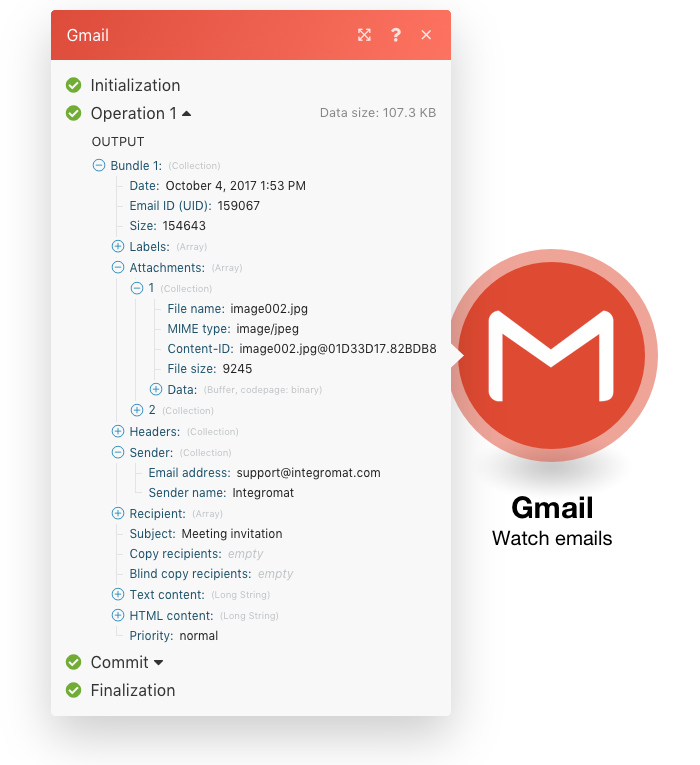We all know that smart work is always advisable as compared to doing the hard work. And what’s the best way to do that? Well, if you have thought about this, then you’d have heard of the term automation, i.e. the ability to automate repetitive tasks rather than doing them manually. One of the popular apps that made this concept familiar with everyone is IFTTT, or “If This Then That”, which allowed users to trigger certain tasks as per the actions. In the enterprise world, automation is becoming much more common, and one of the leading players in this space is the Czech Republic-based Integromat. SaaSworthy recently got a chance to talk to Arpit Choudhury, the Head of Growth at Integromat to understand the company’s journey, how it’s standing out from its rivals, and what it’s planning ahead.
PS: the interview has been edited for the sake of brevity.

Table of Contents
1) Before we talk about Integromat, we’d love to know your journey into the world of SaaS.
Mr Choudhury answered “so I’ve been working in the software space for the last seven years. I was working with an IT services company and we were doing ERP solutions. We were working with large FMCG companies. We were also working on a lot of NFC-based solutions and stuff like that.“
“Afterwards, I went on to work with a couple of startups, I also started one of my own, and then eventually, I landed at Integromat about two years ago. I’ve also consulted a few startups along the way. So, I’m knee deep in the world of SaaS,” he added further.
2) Integromat has an unusual inception story. Unlike a startup that started from a dorm room or a garage, an established system integrations company started it. So what was the need for creating a separate SaaS product, and how has the journey been since 2016?
To this, he replied “well, Integromat’s parent company, known as Integrators.cz has been in the integration space for a long time like more than a decade. They’ve been a systems integrator in the Czech Republic. Initially, Integromat was being built for internal purposes back in 2012 since the company has been doing large-scale integrations for banks, insurance companies and other enterprises. Soon after, Zapier came to the market, and that’s when the parent company realized there’s a market for a tool like this. The product was built over a period of four years and launched in 2016. By then, the integration space had already seen a lot of growth and several other companies were already there.”

“Integromat had a superior product because it was built over an extended period and the team had a lot of experience. Complex integration in this way. entanglement today can do a lot of complex stuff that even Zapier or other big names cannot do,” he added further.
3) What’s the current user base of Integromat like? Could you share the split between enterprises and individual users?
“Integromat has 200,000 to 250,000 registered users. Our userbase comprises people from e-commerce, local businesses, agencies, and then non-profits and education sector as well. We also cater to a lot of individuals and consultants. And then we get into SMEs, a few enterprises, and some large enterprises. So in terms of the split, I would say most of our users are from the SMB or digital agency space, i.e. people working with e-commerce brands or local businesses or education companies. A lot of these people are the founders, or owners, while the others are consultants,” he stated.
He also added “we have a lot of companies that have custom plans. We also offer some different versions of Integromat, such as a private instance which is used by larger companies.“
5) When we talk about automating software, Zapier is easily the most popular tool for businesses, while IFTTT made is simple for a consumer to automate tasks. Where does Integromat fit in and how it stands out amid competition?
To this, he mentioned “for Integromat, IFTTT isn’t a competitor as it’s focused on the IoT space and we don’t have as many IoT integrations. We do plan to add them down the line. Zapier however, is our main competitor. Interestingly, a lot of people are moving from that because of the flexibility that we have. We allow the users to do more complex stuff without creating like a ton of different zaps. So we have a lot of in-built tools and apps that make complex integration easy. I’d say that majority of our users might already have tried Zapier, or at least have an idea about Zapier. They already know what they want from Integromat. Additionally, we’re affordable, and in fact, offer all features and apps even on our free plan. So that has really helped users to explore the tool before they need to buy it.“

“Integromat does have a steeper learning curve. So some users get derailed in that process of activating and building the first scenario and then stop for the day. However, if one goes past that, they immediately see the value. And that’s one of the reasons we continue to grow at a fast pace,” he added.
6) What are you doing to make it easier for users to start using it? Since it does involve a bit of a learning curve.
“For this, we are investing a lot in educational content, be it tutorials or similar things. We’re building use cases, we have a thriving partner network of more than 150. Our partners are helping companies and small businesses with their integrations. And in terms of onboarding, we’re working on improving it by creating contextual guides for specific industries. So based on the industry of the user, we plan to have guides that show them how to create a scenario that’s relevant to them, or their industry. That’s what we are doing right now, and it should be live soon. We also have a thriving community on Facebook and that really helps as people who are stuck can easily write about their issues, and the community always helps.” he replied.
7) Since automation comes out of necessity and isn’t something one might be looking actively, how’s Integromat reaching out to the potential users?
Per Mr Choudhury “right now, we don’t do any paid activities. So all we do is content marketing. We have a thriving partner network, and these are for solutions partners. They act as staunch advocates of Integromat, and they bring a lot of users. They themselves create a lot of use cases and tutorials, which we also promote cross-promote. In addition to that, we have a lot of app partners. So every app that’s integrated with Integromat, we’ve incredibly good relations with them, and that helps in cross-promoting to each other’s audiences. We also conduct webinars, create use cases, and try to educate people on what all they can do by using our product.“
Adding further, “one interesting thing about Integromat is that it’s not a big company, and our team is very lean. We don’t even have a sales team, and we’re a completely product-led company,” he mentioned.
8) What does the future of Integromat looks like? Are you looking at expanding your partner base or reaching more geographies?
Mr Choudhury said “well, we are exploring a lot of different options… building various products in the integration space to expand the ecosystem which comprises our users, our solutions partners, and our app partners. We’re constantly working on innovative ideas and products to cater to all these people and create an integration ecosystem. So our goal is to cater to all kinds of people and meet everyone’s integration and automation needs. In the immediate future, we are building an updated version of Integromat, which will be even more powerful, and we’re just completely focused on building the best product in this space. We’re also building solutions for larger companies. You can call them custom solutions, as they’re like a white-label version of Integromat. Basically, we’re customizing Integromat’s core product for different verticals and businesses.“

“The goal is just to create this ecosystem where everyone can thrive not just us as a company, but our partners can also grow. And people can integrate automation in an easily accessible manner, so that anyone can jump in and start seeing the value of automating manual tasks. That’s something we’ll continue to work towards.” he added.
9) Integromat has a remote team. Do you have any tips to share for those who’ve just started it because of the COVID-19?
“My number one tip is to have a dedicated workspace in your house, whether it’s a separate room or just a corner in your room and that’s the only one that should be used for work purposes. And you should try and keep your distractions to the minimal, i.e. keep your phone away, preferably in a separate room, and follow a schedule. So these are the three most important things when it comes to being productive while working remotely. It’s also good to communicate via written communication. Whether you’re using Slack or any other messaging tool, it’s a good idea to over-communicate. If you are facing challenges and if you want to share ideas, I always recommend people to do that via written memos, so you don’t have any challenge in explaining it properly. Always provide some context to your communication. Similarly, with new ideas that you have, follow a format to share them, and don’t just throw them around on chat,” he answered.
10) What are your favorite SaaS products, apart from Integromat?
He answered “Well, there are a lot of products, but if you ask me personally, I really like those that help people to work with data more efficiently. So we use Mixpanel, Customer.io, Userflow which helps in creating in-app guides and experiences. Zoom is obviously helpful for video conferencing. I also use a tool called Station, which allows me to run a lot of services in one window. Google Calendar is super useful, and I wouldn’t be able to work without that. So these are some of the products I use. There are many others that we use at Integromat, but we’re very particular about the tools we adopt.“






